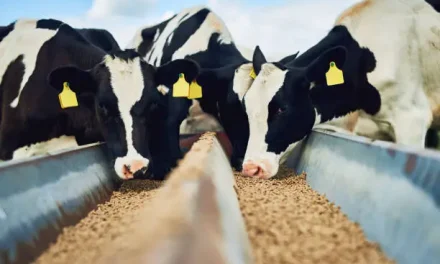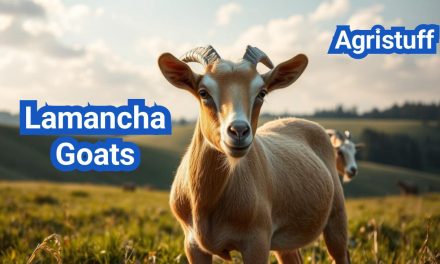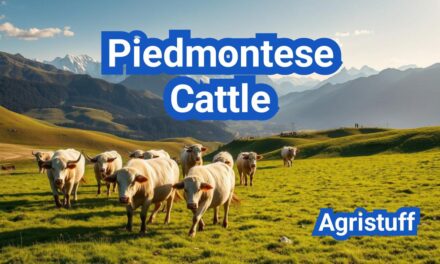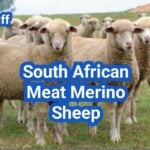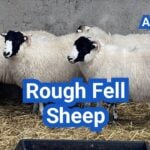Raising miniature cattle breeds is becoming increasingly popular among small-scale farmers and homesteaders in the United States. These compact animals offer a manageable and cost-effective alternative to standard cattle, making them ideal for small acreage.
The appeal of mini cattle lies in their smaller size, which requires less space and feed, reducing overall costs. This guide aims to provide a comprehensive overview of the various mini cattle breeds available, their specific space needs, and the associated costs of raising them on small farms and homesteads.
Key Takeaways
- Mini cattle are a cost-effective alternative to standard cattle.
- They require less space and feed, making them ideal for small acreage.
- Various breeds of mini cattle are available, each with unique characteristics.
- Raising mini cattle can be a profitable venture for small-scale farmers.
- A comprehensive understanding of space needs and costs is crucial for success.
What Makes Mini Cattle Perfect for Small Acreage
Mini cattle are gaining popularity among small-acreage farmers due to their compact size and numerous benefits. These smaller cattle breeds offer an attractive alternative to standard-sized cattle, making them ideal for farmers with limited land.
Definition and Size Classifications
Miniature cattle are defined by their smaller size, typically standing under 42 inches at the shoulder and weighing between 500 and 1,200 pounds. This compact size makes them suitable for small-acreage farms where space is limited.
The size classifications for mini cattle can vary depending on the breed, but they generally fall into three categories: mini, micro-mini, and standard miniatures. Understanding these classifications is essential for farmers to choose the right breed for their land and needs.
History and Development of Miniature Breeds
The development of miniature cattle breeds has a rich history that dates back to the 17th century when breeders began selecting smaller animals from standard breeds. Over time, these smaller animals were bred to create distinct miniature breeds that retained the characteristics of their larger counterparts but with a smaller stature.
Breeds like the Dexter and the miniature Hereford have been developed through selective breeding, resulting in cattle that are not only smaller but also robust and healthy.
Advantages Over Standard-Sized Cattle
Mini cattle offer several advantages over standard-sized cattle, particularly for small-acreage farmers. Some of the key benefits include:
- Space efficiency: Mini cattle require less land to graze, making them ideal for small farms.
- Lower feed costs: Due to their smaller size, mini cattle consume less feed, reducing the overall cost of maintenance.
- Easier handling: Mini cattle are generally more docile and easier to handle than standard-sized cattle.
| Characteristics | Mini Cattle | Standard Cattle |
|---|---|---|
| Height at Shoulder | Under 42 inches | Over 50 inches |
| Weight | 500-1,200 pounds | 1,000-2,000 pounds |
| Feed Costs | Lower | Higher |
These advantages make mini cattle an attractive option for small-acreage farmers looking to diversify their operations or start a small cattle farm.
Top Mini Cattle Breeds in the United States

For those interested in raising mini cattle, understanding the different breeds available is crucial for making informed decisions. The U.S. market features a variety of mini cattle breeds, each with its unique characteristics, advantages, and suitability for different farming purposes.
Miniature Herefords
Miniature Herefords are known for their high-quality beef production. They retain the characteristics of their full-sized counterparts, including their docile nature and efficient feed conversion. Miniature Hereford cattle are an excellent choice for small-acreage farms looking to produce beef.
Dexter Cattle
Dexter cattle are a popular dual-purpose breed, suitable for both milk and meat production. Their compact size and hardiness make them an ideal choice for small farms. Dexter mini cattle are versatile and can thrive in various management systems.
Mini Highland Cattle
Mini Highland cattle are prized for their hardiness and ability to thrive in harsh climates. They are known for their distinctive shaggy coats and are often used in conservation grazing. Their calm temperament makes them a favorite among small-scale farmers.
Mini Jersey Cows
Mini Jersey cows are renowned for their rich milk production, making them an excellent choice for dairy farming on a small scale. They are efficient converters of feed to milk and are known for their friendly disposition.
The top mini cattle breeds in the U.S. offer a range of benefits for small-acreage farmers, from beef and dairy production to conservation grazing. By understanding the characteristics of each breed, farmers can make informed decisions about which animals best suit their needs and management practices.
- Miniature Herefords for beef production
- Dexter cattle for dual-purpose use
- Mini Highland cattle for hardiness and conservation grazing
- Mini Jersey cows for dairy production
Each of these breeds contributes to the diversity and resilience of mini cattle farming in the United States, offering farmers a range of options for sustainable and productive farming practices.
Micro Mini Cows: The Smallest Options Available
The world of mini cattle includes an even smaller subset known as micro mini cows, perfect for compact homesteads. These tiny bovines are gaining attention for their ability to thrive on minimal land while still providing the benefits of cattle ownership.
Defining Characteristics
Micro mini cows are characterized by their exceptionally small stature, typically standing under 36 inches at the shoulder. This miniature size makes them an attractive option for those with very limited space.
Popular Breeds
Some of the popular breeds within the micro mini category include miniature versions of well-known cattle breeds. These breeds have been selectively bred to achieve their small size while retaining the characteristics that make them valuable for farming.
- Miniature Herefords
- Dexter Cattle
- Mini Jersey Cows
Special Care Considerations
Due to their small size, micro mini cows require careful management. Their tiny stature means they can be more susceptible to health issues and environmental stresses. Proper shelter, nutrition, and health care are crucial for maintaining their well-being.
Additionally, their small size can make them more vulnerable to predators, necessitating secure fencing and potentially additional protective measures.
Space Requirements and Stocking Rates for Mini Cattle
The amount of space required for mini cattle depends on several factors, including breed and pasture quality. Understanding these requirements is essential for maintaining healthy cattle and optimizing the use of available land.
Calculating Stocking Rate Per Acre
Calculating the stocking rate per acre is a critical step in managing mini cattle effectively. The stocking rate is typically expressed in terms of the number of animals per acre or hectare. To calculate it, you need to consider the size and type of your cattle, as well as the quality and productivity of your pasture.
Key factors influencing stocking rate include:
- Forage production and quality
- Cattle size and breed
- Grazing management practices
- Climate and weather conditions
A general rule of thumb for mini cattle is to start with a conservative stocking rate and adjust based on observations of pasture condition and cattle performance. For example, a typical stocking rate for mini cattle might range from 2 to 5 animals per acre, depending on the factors mentioned above.
Pasture Rotation Strategies
Pasture rotation is a crucial strategy for maintaining the health and productivity of your mini cattle. By rotating pastures, you can help prevent overgrazing, reduce parasite buildup, and promote more even forage utilization.
Effective pasture rotation involves:
- Dividing your pasture into smaller paddocks
- Moving cattle to a new paddock regularly, based on forage availability and quality
- Allowing paddocks to rest and recover before regrazing
As one expert notes, “Rotational grazing is not just about moving cattle from one place to another; it’s about creating a system that improves soil health, biodiversity, and forage productivity.”
This approach not only benefits the cattle but also enhances the overall sustainability of the farming operation.
Minimum Acreage Recommendations
The minimum acreage required for mini cattle can vary significantly based on factors such as climate, soil quality, and the specific needs of your cattle. However, as a general guideline, it’s often recommended to have at least 1 to 2 acres of well-managed pasture per mini cow.
Considerations for determining minimum acreage include:
- Forage production potential
- Water availability and quality
- Topography and land characteristics
By carefully managing your land and implementing strategies like pasture rotation, you can optimize the use of your available acreage and create a thriving environment for your mini cattle.
Essential Housing and Fencing for Mini Cattle
Providing adequate housing and fencing is crucial for the well-being of mini cattle on small acreage. Mini cattle, like their standard-sized counterparts, need protection from the elements and predators, as well as containment to prevent them from escaping or damaging neighboring properties.
Shelter Requirements and Design Options
Adequate shelter is vital for mini cattle to protect them from extreme weather conditions such as heavy rain, intense sunlight, and cold temperatures. The shelter should be well-ventilated, dry, and spacious enough to accommodate all the animals comfortably.
Key Considerations for Shelter Design:
- Ensure the shelter is well-ventilated to prevent respiratory issues.
- Use durable materials that can withstand various weather conditions.
- Design the shelter to allow for easy cleaning and maintenance.
- Provide adequate bedding such as straw or hay to keep the animals dry and comfortable.
According to agricultural experts, “A well-designed shelter can significantly improve the health and productivity of mini cattle by protecting them from environmental stressors.”
“A good barn or shelter not only protects cattle from the elements but also provides them with a comfortable place to rest, which is essential for their overall health.”
— Dr. John Smith, Agricultural Specialist
Effective Fencing Solutions
Fencing is a critical aspect of mini cattle husbandry, as it ensures the animals are contained and protected from predators. The type of fencing used should be sturdy and appropriate for the size and temperament of the animals.
| Fencing Type | Description | Cost Estimate |
|---|---|---|
| High-Tensile Wire Fencing | Durable and effective for containing mini cattle, requires proper installation. | $3 – $5 per foot |
| Wooden Fencing | Aesthetically pleasing and sturdy, but may require more maintenance. | $5 – $10 per foot |
| Electric Fencing | Cost-effective and easy to install, but requires regular monitoring. | $1 – $3 per foot |
Winter Housing Considerations
During winter, mini cattle require additional care to ensure they remain warm and dry. This may involve providing extra bedding, ensuring the shelter is windproof, and possibly increasing their nutritional intake to help them stay warm.
Winter Care Tips:
- Increase bedding to keep the animals dry and warm.
- Ensure the shelter is free from drafts.
- Provide access to unfrozen water at all times.
- Consider increasing their feed to compensate for the cold weather.
By focusing on these essential housing and fencing needs, mini cattle farmers can ensure the health, safety, and productivity of their animals, even on small acreage.
Feeding Mini Cattle on Limited Land

Managing the diet of mini cattle on small acreage involves a combination of effective pasture management and strategic supplemental feeding. This approach ensures that these smaller animals receive the necessary nutrients for optimal health and productivity.
Pasture Management Techniques
Effective pasture management is crucial for maintaining high-quality forage, which is the primary component of a mini cattle’s diet. Techniques such as rotational grazing can significantly improve pasture productivity. By dividing the pasture into smaller sections and rotating the cattle through them, farmers can prevent overgrazing and allow for adequate regrowth.
Rotational Grazing Benefits:
- Increased forage production
- Improved soil health
- Better parasite control
Additionally, maintaining the right stocking rate is essential to avoid overgrazing. The stocking rate should be adjusted based on the quality and quantity of the forage available.
Supplemental Feed Requirements
While pasture is the mainstay of a mini cattle’s diet, supplemental feeding may be necessary, especially during periods of low forage production or when nutritional needs are not fully met by pasture alone. The type and amount of supplemental feed will depend on factors such as the cattle’s age, size, and production level (e.g., lactating cows).
Common Supplements:
- Hay (e.g., timothy or alfalfa)
- Grain (e.g., corn or oats)
- Mineral supplements
Water Systems for Small Properties
Adequate access to clean water is vital for the health of mini cattle. On small properties, water systems should be designed to provide a reliable and clean water source. This may involve installing automatic waterers or ensuring that natural water sources are safe and accessible.
Key Considerations for Water Systems:
- Ensure water is clean and free from contaminants
- Provide adequate water quantity based on the number of cattle
- Regularly inspect and maintain water delivery systems
Health Care Essentials for Mini Cattle
The health and wellbeing of mini cattle depend on regular veterinary care and preventative measures. Maintaining their health is crucial for their longevity and productivity on small acreages.
Preventative Health Measures
Regular health checks and preventative measures are vital for the health of mini cattle. This includes vaccinations against common cattle diseases and regular parasite control measures.
Vaccination Schedule: Developing a vaccination schedule with a veterinarian is essential. Common vaccinations include those for clostridial diseases and bovine viral diarrhea.
Common Health Issues and Treatment
Mini cattle are susceptible to various health issues, including parasites and hoof problems. Regular monitoring can help identify these issues early.
| Health Issue | Symptoms | Treatment |
|---|---|---|
| Internal Parasites | Weight loss, diarrhea | Deworming medication |
| Hoof Problems | Lameness, hoof cracks | Regular hoof trimming, topical treatments |
Finding Qualified Veterinary Care
It’s crucial to find a veterinarian experienced in caring for mini cattle. They can provide guidance on health care and help manage any health issues that arise.
Tips for Finding a Veterinarian:
- Ask for referrals from other mini cattle owners.
- Check for experience with miniature breeds.
- Ensure they are knowledgeable about specific health needs.
The Complete Cost of Owning Mini Cattle in the U.S.

The cost of owning mini cattle in the U.S. encompasses several factors that prospective owners should be aware of. From the initial purchase price to ongoing expenses and potential returns, understanding these costs is crucial for anyone considering adding mini cattle to their small acreage.
Initial Purchase Prices by Breed
The initial purchase price of mini cattle varies significantly depending on the breed, quality, and age of the animal. For instance, miniature breeds like the Dexter or Miniature Hereford can range from $1,000 to $3,000 per head, while rare or high-quality animals can cost upwards of $5,000.
- Miniature Herefords: $1,500 – $3,500
- Dexter Cattle: $1,000 – $3,000
- Mini Highland Cattle: $2,000 – $4,000
- Mini Jersey Cows: $1,200 – $2,500
Annual Maintenance Expenses
Annual maintenance expenses for mini cattle include feed, veterinary care, and equipment. The cost of feed can vary depending on whether the cattle are grazed on pasture or fed hay and grains. On average, the annual cost per head for feed can range from $300 to $700.
| Expense Category | Average Annual Cost per Head |
|---|---|
| Feed | $300 – $700 |
| Veterinary Care | $100 – $200 |
| Equipment and Supplies | $50 – $100 |
Equipment and Infrastructure Investment
Investing in appropriate equipment and infrastructure is essential for the health and well-being of mini cattle. This includes fencing, shelter, and feeding equipment. The initial investment can range from $2,000 to $5,000, depending on the size of the operation and the quality of the equipment.
Potential Returns and Income Opportunities
While the primary motivation for owning mini cattle may not be financial, there are potential returns and income opportunities. These can come from selling breeding stock, dairy products, or beef. The profitability depends on factors like the breed, market demand, and the owner’s ability to manage the operation efficiently.
By understanding the complete cost of owning mini cattle, prospective owners can make informed decisions and potentially turn their mini cattle operation into a sustainable and profitable venture.
Where to Buy Miniature Cattle

When it comes to buying mini cattle, the importance of selecting a reputable breeder cannot be overstated. The process involves not just finding the right animals but also ensuring they come from a source that prioritizes their health and genetics.
Finding Reputable Breeders
To find a trustworthy breeder, one should start by researching local and national breed associations, such as the American Dexter Cattle Association or the Miniature Hereford Breeders Association. These organizations often have breeder directories that can be a good starting point.
Key characteristics of reputable breeders include:
- Transparency about the health and genetic history of their animals
- Membership in relevant breed associations
- Positive reviews and testimonials from previous customers
- Clear communication and willingness to answer questions
What to Look for When Purchasing
Once a reputable breeder is identified, the next step is to inspect the animals. Look for signs of good health, such as a shiny coat, clear eyes, and active behavior. It’s also crucial to ask about the animal’s diet, vaccination history, and any genetic testing that has been done.
“The quality of your mini cattle is directly related to the quality of the breeder you choose. Take your time, and don’t hesitate to ask questions.”
A useful table to consider when evaluating mini cattle is as follows:
| Characteristic | Ideal Condition | What to Avoid |
|---|---|---|
| Coat Condition | Shiny and healthy | Dull, matted, or patchy |
| Eyes | Bright and clear | Dull, red, or discharging |
| Behavior | Active and alert | Lethargic or aggressive |
Transportation and Acclimation
After purchasing, the next critical steps are transporting the mini cattle to their new home and acclimating them to their new environment. It’s essential to plan for safe transportation, such as using a suitable trailer, and to have a plan in place for introducing the new animals to their pasture or enclosure.
Proper acclimation is key to reducing stress and ensuring the health of your new mini cattle.
By following these guidelines, prospective mini cattle owners can ensure they are making an informed purchase and setting themselves up for success in their mini cattle journey.
Legal Considerations for Keeping Mini Cattle
Understanding the legal considerations for keeping mini cattle is essential for any prospective owner. The laws and regulations surrounding mini cattle vary significantly by location, making it crucial for owners to be well-informed.
Zoning and Land Use Regulations
Zoning laws dictate how land can be used within specific areas, and these regulations can significantly impact your ability to keep mini cattle. It’s essential to check with local authorities to determine if your property is zoned for livestock.
Some areas have specific ordinances regarding the keeping of livestock, including mini cattle. These ordinances might cover aspects such as:
- The number of animals allowed per acre
- Fencing requirements to keep animals contained
- Proximity to neighboring properties and public roads
For example, a local ordinance might require a minimum of 2 acres for the first mini cow, with additional acreage required for each subsequent animal.
| Aspect | Regulation Example |
|---|---|
| Minimum Acreage | 2 acres for the first animal, 1 additional acre for each subsequent animal |
| Fencing Requirements | 4-foot high fence, with specific materials and installation guidelines |
| Proximity to Neighbors | Minimum distance of 50 feet from neighboring properties |
Registration and Identification Requirements
Registration and identification of mini cattle are critical for breeding purposes and disease control. Registration involves recording the animal’s pedigree and ownership details with a breed association, while identification typically involves methods such as ear tagging or tattooing.
The process and requirements for registration can vary depending on the breed. For instance, Miniature Herefords are registered with the American Hereford Association, which has specific guidelines for registration, including pedigree requirements and inspections.
Identification is also crucial for maintaining herd health. Methods include:
- Ear tags with unique identifiers
- Tattoos
- Microchips
These identification methods help in tracking the health and movement of the animals, which is vital for disease control and compliance with health regulations.
Mini Cattle vs. Traditional Cattle Farming

Mini cattle farming has emerged as a viable alternative to traditional cattle farming, offering unique advantages and challenges. As farmers and homesteaders consider their options, understanding the differences between these two approaches is crucial.
Size and Space Efficiency
One of the most significant advantages of mini cattle is their size. Requiring less space than traditional cattle, mini breeds are ideal for small acreage properties. This size efficiency allows farmers to manage their land more effectively, potentially increasing overall productivity.
For instance, a small farm with limited pasture can accommodate mini cattle more easily than larger traditional breeds. This not only reduces the pressure on the land but also allows for more flexible grazing management strategies.
Production Capabilities Comparison
While mini cattle offer advantages in terms of space, their production capabilities compared to traditional cattle can vary. Mini breeds may produce less milk or beef per animal, but their overall efficiency and lower feed requirements can offset these differences.
It’s essential to consider the specific production needs and goals of the farm. For example, mini dairy breeds can provide a significant amount of milk relative to their size, making them suitable for small-scale dairy operations.
Economic Considerations
Economic factors play a crucial role in deciding between mini and traditional cattle farming. The initial investment in mini cattle is often lower, as is the cost of maintaining them. However, the return on investment can depend on the production capabilities and market demand for the products.
Farmers should also consider the potential for niche marketing with mini cattle products, which can command premium prices due to their unique characteristics.
In conclusion, the choice between mini cattle and traditional cattle farming depends on a variety of factors, including land availability, production goals, and economic considerations. By understanding these differences, farmers can make informed decisions that best suit their operations.
Raising Mini Cattle for Different Purposes
Raising mini cattle can serve multiple purposes on small farms, from producing beef and dairy products to being part of hobby farming and conservation initiatives. Their versatility makes them an attractive option for a variety of farming needs.
Beef Production on Small Acreage
Mini cattle are an excellent choice for beef production on small acreage due to their smaller size and lower feed requirements. They can be raised on as little as 1-2 acres, depending on the breed and pasture management. Miniature Herefords and Dexter cattle are popular breeds for beef production due to their high-quality meat and efficient feed conversion.
Beef production with mini cattle involves careful breeding, feeding, and management practices to ensure high-quality meat. Farmers can market their beef directly to consumers or through local butcher shops, providing a profitable venture.
Family Milk Cows
Mini cattle can also be used for dairy production, offering a sustainable source of milk for families. Breeds like Mini Jersey cows are renowned for their rich milk production relative to their size. They require less feed and space compared to standard dairy cows, making them ideal for small farms.
Dairy production with mini cattle involves regular milking, nutritional management, and health care to maintain milk quality and quantity. The milk can be consumed directly, used to make dairy products like cheese and butter, or sold to local markets.
Hobby Farming and Show Animals
Many farmers raise mini cattle as part of hobby farming or for showing at agricultural events. These animals are often chosen for their unique characteristics or breed purity. Mini Highland cattle, with their distinctive shaggy coats, are a favorite among hobby farmers and exhibitors.
Hobby farming with mini cattle allows individuals to engage in agricultural activities on a small scale, enjoying the companionship of the animals and the satisfaction of managing a small farm.
Conservation and Heritage Breeds
Some mini cattle breeds are considered heritage or conservation breeds due to their historical significance or rarity. Raising these breeds contributes to their preservation and promotes genetic diversity within the cattle population.
Farmers interested in conservation can choose breeds like the Dexter cattle, which are not only valuable for their meat and milk but also for their historical significance. Conservation efforts help ensure the survival of these unique genetic resources.
Success Stories: Mini Cattle on Small Acreage Homesteads

The trend of keeping mini cattle on small homesteads is gaining popularity due to their manageable size and versatility. Many small-scale farmers have successfully integrated mini cattle into their operations, benefiting from their size and the variety of products they can provide.
Suburban Mini Cattle Operation
One notable success story involves a suburban farmer in the United States who began raising miniature Herefords on a 5-acre plot. Initially, the farmer faced challenges related to pasture management and fencing. However, by implementing rotational grazing and using high-tensile fencing, the farmer was able to maintain a healthy pasture and reduce the risk of escape or predation.
The benefits of this operation were multifaceted:
- High-quality beef for personal consumption
- Additional income through the sale of breeding stock
- Land management through grazing, reducing the need for mechanical brush control
Diversified Small Farm Integration
Another success story comes from a diversified small farm that incorporated mini Jersey cows into their operation. The farm, which spans 20 acres, already had a variety of crops and other livestock. The addition of mini cattle allowed the farm to:
| Benefit | Description |
|---|---|
| Diversified Income Streams | The farm was able to produce and sell milk, cheese, and breeding stock, creating multiple revenue streams. |
| Improved Land Use | Grazing by mini cattle helped maintain pasture health and reduced weed and brush growth. |
| Enhanced Biodiversity | The integration of mini cattle contributed to a more diverse farm ecosystem, supporting a wider range of flora and fauna. |
By diversifying their operation to include mini cattle, the farm was able to enhance its overall sustainability and profitability.
Is Raising Mini Cattle Right for You?
Raising mini cattle can be a rewarding venture for those with the right resources and knowledge. As discussed, various factors contribute to the success of mini cattle farming, including breed selection, space requirements, and health care.
When considering raising mini cattle, it’s essential to weigh the benefits against the challenges. The benefits of mini cattle, such as lower space and feed requirements, make them an attractive option for small acreage homesteads.
However, considerations for mini cattle farming, including initial investment, ongoing expenses, and veterinary care, must be carefully evaluated. By understanding these factors, you can make an informed decision about whether mini cattle are right for your situation.
Ultimately, raising mini cattle can be a fulfilling experience, providing opportunities for beef production, milk production, or simply enjoying the companionship of these gentle animals. With careful planning and attention to the unique needs of mini cattle, you can successfully integrate them into your small acreage homestead.
FAQ
What are the benefits of raising mini cattle on small acreage?
Mini cattle offer several benefits, including reduced land requirements, lower maintenance costs, and the ability to produce beef, dairy, or other products on a smaller scale.
What are the most popular breeds of mini cattle in the U.S.?
Some of the top breeds include Miniature Herefords, Dexter Cattle, Mini Highland Cattle, and Mini Jersey Cows, each with their unique characteristics and advantages.
How much space do mini cattle require?
The space needed for mini cattle depends on factors like breed, size, and grazing quality, but generally, they require less land than standard-sized cattle, with a minimum of 1-2 acres for a small herd.
What is a micro mini cow, and what are the special considerations for their care?
Micro mini cows are the smallest varieties of mini cattle, typically weighing under 700 pounds, and require special care, including careful feeding, shelter, and health monitoring due to their compact size.
How do I calculate the stocking rate for mini cattle on my land?
To calculate the stocking rate, consider factors like forage quality, land quality, and the size and breed of your mini cattle, aiming for a rate that maintains pasture health and animal well-being.
What are the essential housing and fencing requirements for mini cattle?
Mini cattle need shelter from the elements, adequate fencing to prevent escape or predation, and protection from extreme weather conditions, with considerations for winter housing and ventilation.
How do I manage pastures for mini cattle on limited land?
Effective pasture management involves techniques like rotational grazing, maintaining soil fertility, and monitoring forage quality to ensure the health and productivity of your mini cattle.
What are the health care essentials for mini cattle?
Preventative health measures, regular veterinary check-ups, and monitoring for common health issues are crucial for maintaining the health of mini cattle, along with proper nutrition and living conditions.
What are the costs associated with owning mini cattle?
The costs include the initial purchase price, annual maintenance expenses, equipment, and infrastructure investments, as well as potential returns from selling products like beef, dairy, or breeding stock.
Where can I buy miniature cattle, and what should I look for?
Reputable breeders can be found through breed associations, online marketplaces, or local agricultural networks; when purchasing, consider factors like breed, size, health, and temperament.
What are the legal considerations for keeping mini cattle?
Zoning and land use regulations, registration, and identification requirements vary by location, so it’s essential to check local laws and regulations before bringing mini cattle onto your property.
Can mini cattle be raised for different purposes, such as beef or dairy production?
Yes, mini cattle can be raised for various purposes, including beef and dairy production, hobby farming, showing, or conservation of heritage breeds, depending on your goals and resources.
How do mini cattle compare to traditional cattle farming in terms of size and production capabilities?
Mini cattle offer advantages in terms of size and space efficiency, but may have lower production capabilities compared to traditional cattle; however, they can still provide a viable and profitable farming option for small-scale operations.
Conclusion of: Mini Cattle in the U.S.
Mini cattle in the U.S.: why small cows are a big deal for small acreage
Mini cattle are getting a lot of attention in the U.S. as more families try to raise part of their own food, use a few acres more efficiently, or keep livestock that are easier to manage than full-size cows. Unlike toys or novelty pets, mini cattle are real cattle that have been selectively bred for smaller frames while still producing beef, milk, and manure to build soil health.
For owners with only a few acres, mini cattle can turn pasture into beef for the freezer, fresh milk for the family, and an attractive grazing landscape without the heavy impact of large cattle. Many new homesteaders feel that mini cattle are less intimidating, easier to handle, and better suited to mixed-use rural properties that combine gardens, orchards, and animals. If you plan carefully for fencing, forage, and long-term costs, mini cattle can be the foundation of a productive, small-scale livestock system in the U.S. More on small-scale cattle from Agriculture.com
What are mini cattle, exactly?
Mini cattle are typically defined by their height at the hip rather than by a specific breed, and this makes mini cattle a size category that can include several breeds and crossbreds. Most breeders in the U.S. use height classes such as micro-mini cattle under about 36 inches, standard mini cattle around 36–42 inches, and midsize mini cattle from roughly 42–48 inches at maturity. Within those size bands, mini cattle can be downsized versions of familiar breeds like Hereford, Highland, Jersey, or Angus, or carefully developed composites aimed at good temperament and efficiency.
Because mini cattle are still strong ruminants weighing several hundred pounds, they require the same respect and management as standard cattle—just with smaller facilities and feed demand. When you evaluate mini cattle, it is important to look at body condition, udder structure, hooves, and movement to be sure that size reduction has not compromised health or soundness. ATTRA’s small-scale livestock resources
Why mini cattle are popular on small acreage in the U.S.
Mini cattle have become popular on small acreage because they allow owners to experience cattle without needing a large ranch or heavy-duty equipment for handling huge animals. Many people who work off-farm find that mini cattle fit more easily into their schedules and budgets, since mini cattle eat less, require less hay storage, and leave lighter hoofprints on the land.
Families with children often appreciate that mini cattle are less intimidating to lead, halter-train, and groom, which supports 4-H and youth livestock projects on small properties. Mini cattle can also match modern goals of diversification: one property can host gardens, poultry, and mini cattle together, supported by rotational grazing and composting. For small-acreage owners near suburbs, the slightly lower noise and footprint of mini cattle can also ease neighbor concerns compared to standard beef operations. Oklahoma State Extension livestock resources
Common mini cattle breeds in the U.S.
Several breeds show up repeatedly in discussions of mini cattle in the U.S., and each provides different strengths for small-acreage owners who want mini cattle. Miniature Herefords are one of the best-known beef-focused mini cattle types, combining the classic red-and-white color pattern with efficient feed conversion and relatively calm temperament. Dexter cattle, an Irish heritage breed, are naturally small and often used as dual-purpose mini cattle that can supply both milk and beef for a family.
Some breeders specialize in Lowline or miniature Angus, aiming for compact, deep-bodied mini cattle that finish well on grass in U.S. climates. When you compare these options, consider whether you want stronger beef traits, reliable milk production, or a balanced dual-purpose type of mini cattle to match your goals. General beef cattle info at Beef It’s What’s For Dinner
Other mini cattle types are prized as much for appearance as for production, especially on hobby farms and agritourism operations. Mini Highland and HighPark-style mini cattle, with their long hair and often striking white belts or patches, are popular for “fluffy cow” photography and farm events. Mini Jerseys and other miniature dairy lines appeal to families who want rich milk from mini cattle without committing to the volume produced by full-size Holsteins or standard Jerseys.
Crossbred mini cattle that blend hardy beef lines with dairy or heritage genetics can add hybrid vigor, which may improve fertility and disease resistance. Because registration rules and size standards vary by association, buyers should ask breeders how they measure, record, and classify their mini cattle before purchasing. Minnesota Extension beef and dairy resources
How big are mini cattle compared to full-size cows?
Although the word “mini” sounds very small, mini cattle are still substantial animals that require serious facilities and management. A full-size beef cow in the U.S. may weigh 1,200–1,400 pounds or more and stand over 50 inches tall at the hip, while many mini cattle are closer to 400–800 pounds and around 36–48 inches. This size difference means that mini cattle can fit better in smaller barns, narrower lanes, and smaller trailers, which lowers the cost and complexity of handling.
However, mini cattle still have enough power to damage weak fences, knock over inexperienced handlers, or injure other animals if they are stressed or improperly handled. When you plan infrastructure for mini cattle, it is safest to design for a strong, adult animal rather than assuming that “small” equals “harmless.” This realistic view of size helps you create a safe working environment for both people and mini cattle. American Veterinary Medical Association livestock guidance
Space and pasture needs of mini cattle on small acreage
One of the most common questions about mini cattle is how many animals a small property can support without degrading the land. While soil type, rainfall, grazing management, and climate all play major roles, mini cattle generally need less acreage per head than standard cattle because of their smaller size. On many average pastures, one standard cow might require two or more acres, while some managers successfully keep one or two mini cattle on roughly the same space under good rotational grazing.
For new owners, a conservative rule is to start with fewer mini cattle than the land might theoretically support, then observe grass recovery, body condition, and soil health over at least a full year. Using temporary fencing, you can rotate mini cattle between paddocks to prevent overgrazing and allow rest periods for your forage. Adjusting your stocking rate gradually helps you match mini cattle numbers to your land’s true carrying capacity. Penn State Extension pasture and grazing resources
Housing, shelter, and fencing for mini cattle
Housing needs for mini cattle are similar to those of full-size beef or dairy animals, just scaled down according to body size. In cold or wet climates, mini cattle benefit from a simple three-sided shed that provides windbreak and dry bedding, with enough square footage that animals can lie down comfortably without crowding. Mini cattle kept in confinement or dry-lot systems need more space per head, good ventilation, and regular manure management to reduce respiratory and hoof problems.
Fencing for mini cattle should be just as secure as fencing for standard cattle, since even a small cow can push through weak posts or sagging wire. Many owners use a combination of woven wire, cattle panels, or high-tensile electric fencing at around four feet or higher to keep mini cattle safely contained. Investing in sturdy perimeter fencing and well-hung gates will reduce escapes and improve long-term safety for mini cattle and neighbors alike. University of Massachusetts livestock housing information
Feeding and nutrition for mini cattle
Nutritionally, mini cattle function just like standard cattle: they are ruminants that rely on forage and require balanced energy, protein, vitamins, and minerals. A typical guideline is that cattle eat roughly two to three percent of their body weight in dry matter each day, so a 600-pound mini cattle heifer may consume around 12–18 pounds of dry feed between pasture and hay. Because mini cattle are smaller, owners sometimes make the mistake of overfeeding grain, which can lead to obesity, laminitis, or metabolic issues.
The best approach is to base the mini cattle diet on good pasture or quality grass hay, then supplement only as needed for maintenance, growth, or late gestation. Free-choice mineral formulated for cattle, plenty of fresh water, and regular body-condition scoring will help you catch problems early and keep mini cattle in healthy, moderate condition. Consulting a local extension agent or veterinarian can fine-tune rations for your climate and forage base. USDA resources on livestock and forage
Health, genetics, and handling considerations for mini cattle
Health care for mini cattle follows the same principles as for full-size cows, with emphasis on vaccination, parasite control, and biosecurity. Some lines of mini cattle may carry dwarfism genes, so ethical breeders use genetic testing and careful mating plans to avoid lethal combinations and structural defects. Prospective buyers should ask for health records, vaccination history, and, when possible, genetic test results before investing in mini cattle breeding stock.
Routine veterinary care such as pregnancy checks, calving assistance, and hoof trimming is easier when mini cattle are halter-broke and trained to enter a small chute or headgate. Gentle, consistent handling from a young age helps mini cattle stay calm during exams, which lowers stress for both animals and humans. Establishing a relationship with a large-animal veterinarian before emergencies arise is one of the wisest investments you can make when starting with mini cattle. University of Illinois Veterinary Medicine resources
What does it cost to buy mini cattle in the U.S.?
Purchase price is often the biggest surprise for newcomers to mini cattle, because demand for small-framed, well-bred animals is high and supply is relatively limited. While prices vary widely by region, pedigree, and color, many homesteaders find that a quality mini cattle heifer can cost several times more than a standard beef feeder calf. Pet-quality steers or crossbred mini cattle may be more affordable, but registered breeding stock, especially rare colors or extremely short “micro-mini” types, can command premium prices.
It is wise to view these purchases as a long-term investment and to buy from reputable breeders who provide contracts, health guarantees, and after-sale support. Asking about previous sales, waiting lists, and customer references can help you separate established mini cattle programs from casual or short-term sellers. A clear purchase agreement protects both the buyer and seller and sets realistic expectations for mini cattle performance. Miniature cow price guides at A-Z Animals
Ongoing costs: keeping mini cattle on a budget
Beyond the initial purchase, mini cattle ownership includes ongoing costs for feed, minerals, bedding, fencing repairs, veterinary care, breeding, and occasional equipment. In many regions, hay and feed will be the single largest annual expense, even though mini cattle eat less than full-size animals. Basic health costs—such as vaccinations, deworming, and emergency care—should be budgeted every year so you are not forced to delay treatments when mini cattle need help.
Many owners save money by learning to do simple tasks like body-condition scoring, fecal checks with veterinary guidance, and routine hoof trimming. When mini cattle are part of a broader farm plan, some costs can be offset by sales of calves, freezer beef, or agritourism experiences. It is also worth exploring state and federal programs that may share costs for fencing, water development, or soil conservation projects that benefit mini cattle and other livestock. USDA Farm Service Agency programs overview
Regulations, zoning, and neighbor relations for mini cattle
Before buying mini cattle, small-acreage owners should check local zoning rules, subdivision covenants, and any livestock regulations that apply in their county or municipality. Some residential areas restrict the number or type of animals that can be kept, and mini cattle may still be classified simply as “cattle” under these rules. Rural and agricultural zones are usually more flexible, but they may still require proper manure management, setbacks from wells, or minimum lot sizes.
It’s important to consider how mini cattle will affect neighbors in terms of noise, smells, and traffic, especially if you plan to sell calves or host agritourism. Clear communication, tidy fencing, and good fly control go a long way toward maintaining positive relationships while you raise mini cattle. When in doubt, consult your local planning office or extension service to ensure that mini cattle fit into your land-use category. NRCS information on conservation and land use
Choosing the right mini cattle breed for your small acreage
With so many options available, choosing a mini cattle breed starts with clarifying your goals and climate. If your top priority is grass-fed beef, compact beef-type mini cattle such as Miniature Herefords, Lowline-influenced animals, or other beef-focused crosses may be ideal. Families primarily interested in fresh milk might lean toward Dexter or mini Jersey lines of mini cattle, which can produce enough milk for household needs without overwhelming storage.
For agritourism or “pasture pet” operations, visually striking mini cattle like Highland crosses may draw visitors and photography clients, but they often have higher purchase prices and grooming needs. It is wise to visit several farms, ask to see mature animals as well as calves, and observe how mini cattle behave in real working conditions. Matching temperament, production level, and climate tolerance will help you choose mini cattle that thrive on your specific acreage. Background on cattle breeds at Britannica
Income and lifestyle opportunities with mini cattle
For many owners, mini cattle are part of a broader lifestyle choice that blends food production, land stewardship, and family activities. Mini cattle can supply beef and sometimes milk for home use, and where regulations allow, they may support small-scale direct marketing of freezer beef or value-added dairy products. Agritourism opportunities—such as farm tours, photography sessions with friendly mini cattle, or educational workshops—can create additional income streams and community connections.
Because mini cattle attract attention on social media, some farms build strong online brands around their herds, leading to calf reservations and merchandising. However, it is important not to rely on mini cattle alone for income; instead, view them as one enterprise in a diversified farm plan that could include poultry, produce, and on-farm events. This approach helps spread risk and keeps mini cattle enjoyable rather than financially stressful. SARE resources on farm profitability and diversification
Final thought
Mini cattle give modern U.S. landowners a practical way to experience cattle on a scale that fits smaller acreages, limited time, and family-centered goals. With thoughtful planning, these mini cattle can provide home-raised beef, modest amounts of milk, and living “lawnmowers” that cycle nutrients through your pasture. Success with mini cattle depends on realistic budgeting, solid infrastructure, and a commitment to ongoing education about grazing management, animal health, and local regulations.
When you combine good genetics, humane handling, and regenerative practices, mini cattle can enrich your soil and your life far beyond the novelty of having small cows. If you are willing to learn and adapt, mini cattle can turn even a few acres into a productive and welcoming homestead landscape. Stories of country living with livestock
Sources & References
Mini cattle owners in the U.S. can deepen their knowledge by exploring educational materials from universities, government agencies, and established agricultural organizations that cover grazing, animal health, and small-scale livestock management applicable to mini cattle. These resources help you cross-check advice from breeders, refine your grazing plans, and stay current with regulations that could affect how you raise mini cattle on small acreage.
- USDA official website
- United States Department of Agriculture (USDA)
- USDA Farm Service Agency (FSA)
- USDA Natural Resources Conservation Service (NRCS)
- Oklahoma State University Extension
- Penn State Extension
- University of Minnesota Extension
- University of Massachusetts Amherst
- ATTRA Sustainable Agriculture Program (NCAT)
- Beef It’s What’s For Dinner
- A-Z Animals livestock guides


